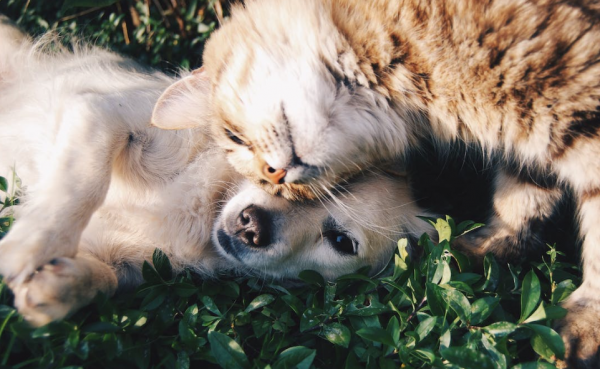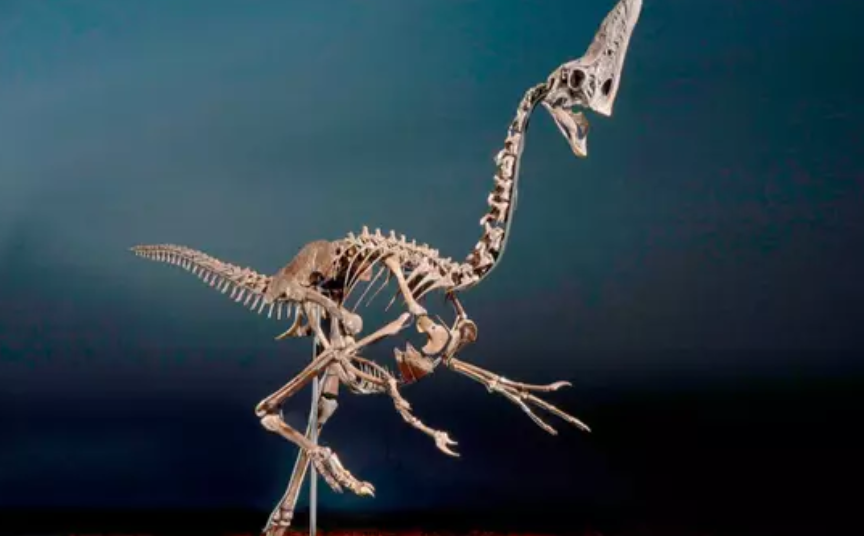Do Dogs Love You More Than Cats? Study Finds Out!

© Snapwire / Pexels
Are you Team Dog or Team Cat? Whether you are a dog or cat person, the debate on who loves you more is never-ending. Don’t worry though, we have got you covered! Recent findings on affection in dogs and cats bring fresh insights. Dogs show off higher oxytocin levels, the love hormone when hanging out with their owners. While, on the other hand, cats, with their quirky habits like curling up in a ball, reveal a more mysterious way of expressing love. Whether it’s your dog’s contagious yawns or your cat’s cuddles, each pet has its unique style of showering you with affection. But, who really loves you more? Keep on reading to find out more about affection in dogs and cats.
Affection in Dogs and Cats
In a recent study conducted for a BBC documentary titled “Cats vs. Dogs,” researchers have made an interesting discovery. It is regarding the emotional response of dogs and cats towards their owners. The study concludes that dogs exhibit five times more love. This was measured by the release of oxytocin when they see their owners in comparison to cats.

The researchers focused on oxytocin. It is a hormone known to stimulate pleasure in the brain and play a crucial role in forming bonds, especially with offspring. The study suggests that the emotional connection between dogs and their owners involves a significantly higher level of oxytocin release than that observed in cats under similar circumstances. This chemical aspect sheds light on the emotional dynamics between humans and their canine companions. It also emphasizes the role of oxytocin in fostering a stronger sense of connection and pleasure when dogs interact with their owners.
What Did They Discover?
In the context of the BBC documentary, which focused on measuring love through oxytocin release, researchers discovered that dogs exhibit five times more love when they see their owners compared to cats. This hormone plays a crucial role in the emotional connection between humans and their canine companions.

Neuroscientist Dr. Paul Zak, who collaborated on the documentary’s research, expressed surprise at the high levels of oxytocin in dogs. He was also surprised at the unexpected discovery that cats also produce oxytocin, suggesting that, at least some of the time, cats form bonds with their owners. This adds nuance to our understanding of the emotional dynamics between humans and their pets.
Not the First Study Surrounding Affection in Dogs and Cats
The recent study featured in a BBC documentary, “Cats vs. Dogs,” adds to existing research on the subject. Last April, Science magazine reported that gazing into a dog’s eyes releases oxytocin in people. This shows the significance of eye contact in human-canine interactions. Takefumi Kikusui from Azabu University in Japan noted that humans are particularly sensitive to eye contact. According to Kikusui, they use it for affiliative communication. The study found that gaze, rather than touch, led to the release of oxytocin. This showed the importance of visual communication in the bonding process.
Why Do Dogs Love More Than Cats?
The longstanding debate over whether dogs or cats are more affectionate can be traced back to the science of oxytocin. These are the three main reasons why dogs may love more than cats:
1. Dogs Produce More Oxytocin
As mentioned earlier, numerous studies indicate that both dogs and cats produce oxytocin in the presence of their owners. However, dogs outpace cats by nearly five times in the release of this hormone. This discrepancy may contribute to the perceived differences in affection between the two pets, with cats exhibiting a comparatively smaller response to their owners, possibly contributing to their perceived aloofness.

2. Dogs Are More Social
The social nature of dogs, stemming from their wolf ancestry where they lived, worked, and hunted in packs, plays a crucial role in their bonding with humans. Dogs view their owners and their families as part of their pack, fostering quicker and more robust bonds. On the other hand, cats, inherently more independent and solitary creatures, do not form secure attachments. While cats rely on humans for sustenance, their nature as skilled hunters allows them to seek food independently if necessary.
3. Dogs and Cats Greet Differently
This behavioral contrast is further exemplified in the way pets greet their owners. Dogs, seeking safety, security, and their needs met, enthusiastically greet their owners with pouncing and licking. In contrast, cats, historically adept hunters, may approach their owners for affection at their discretion. Understanding these inherent differences in social and hunting behaviors can help pet owners appreciate and accept the distinct ways in which dogs and cats express their affection.

Something to Consider
Ultimately, the perceived difference in the love shown by dogs and cats may be influenced by individual personalities, expectations, and the unique ways in which each species communicates affection. It is essential to appreciate and understand the distinct qualities of both dogs and cats, recognizing that their expressions of love vary and are shaped by their evolutionary history and individual characteristics.

While your cat may not display social behaviors like dogs, they express affection in subtle ways such as purring, cheek rubbing, sitting beside you, or twitching of their tail tips. These actions may seem understated compared to dogs, but they signify genuine affection. It’s important not to dismiss your cat as unaffectionate simply because their expressions are more nuanced; they’re just different from the overt displays seen in dogs. Each pet has its unique way of showing love, and recognizing these subtle signs can deepen your understanding of your feline companion.
Fun Facts About Cats
Here are 5 additional facts about cats:
1. Cats Can’t Taste Sweetness
Unlike many other animals, including humans, cats lack taste receptors for sweet flavors. This trait is attributed to a genetic mutation that occurred during their evolutionary history, leading to the loss of the sweet taste receptor gene. As a result, cats do not have a preference for or an ability to detect sugary substances.
2. Cats Have Complex Vision
Cats exhibit a form of nearsightedness, meaning their ability to see objects clearly at a distance is limited compared to humans. However, their visual strengths lie in other areas. Cats have exceptional peripheral vision, allowing them to detect movement in a wide field around them. Additionally, their night vision is significantly superior to that of humans. Cats have adapted eyes that contain a higher number of rod cells, specialized for low-light conditions, enabling them to navigate and hunt effectively in dim or dark environments.

3. Cats Don’t Have Whiskers on Their Body
Contrary to a common misconception, cats do not have whiskers on the backs of their front legs. Whiskers, also known as vibrissae, are specialized sensory hairs that are primarily located on a cat’s face. These whiskers are deeply embedded in the cat’s body and are connected to the nervous system, providing them with valuable information about their surroundings.
While cats do have shorter, finer hairs on various parts of their body, including their legs, these do not serve the same sensory function as the whiskers on their face. The whiskers on a cat’s face are highly sensitive to touch and can detect changes in air currents, allowing cats to navigate their environment, especially in low-light conditions.
4. Cats Have More Neurons Than Dogs
The cerebral cortex of cats contains approximately 300 million neurons, whereas dogs have around 160 million neurons in the same region. The cerebral cortex is associated with various complex cognitive functions, and the difference in neuron density may contribute to variations in the cognitive abilities and behaviors observed in cats and dogs.
5. Are Cats Left or Right-Pawed?
While research has shown that some animals, including cats, may exhibit pawedness preferences (left or right), the association between gender and paw preference is less clear and may vary among individual cats.
Studies on pawedness in cats suggest that about 40% of cats are right-pawed, 20% are left-pawed, and the remaining 40% show no clear preference. However, the correlation between gender and pawedness is not consistently supported in the scientific literature. Individual differences in pawedness are likely influenced by a combination of genetic and environmental factors.
Fun Facts About Dogs
Interested in dogs as well? Here are some things to know:
1. Dogs Have an Amazing Sense of Smell
Dogs possess an extraordinary sense of smell, with as many as 300 million receptors in their noses, a stark contrast to the approximately 5 million receptors found in the human nose. This remarkable olfactory ability allows dogs to detect scents with unparalleled precision and sensitivity. The olfactory prowess of dogs goes beyond mere detection, as they can also distinguish between various odors, making them invaluable in tasks such as search and rescue, tracking, and even medical detection.
2. Dogs Can Yawn From Your Yawn
The phenomenon of contagious yawning extends to dogs. The sound of a human yawn can prompt a yawn from our canine companions. Intriguingly, this yawning response is four times more likely to occur when the yawn originates from a person familiar to the dog. This shared behavior suggests a level of social and emotional connection between humans and their pets, emphasizing the influence of familiarity and bonding on the contagious nature of yawning in the cross-species dynamic.
3. This Is Why Dogs Curl Up
Dogs instinctively curl up in a ball when sleeping, a behavior rooted in their evolutionary past. This posture serves as a protective measure for their vital organs, a survival strategy inherited from their wild ancestors. In the natural environment, where dogs were susceptible to predator attacks, assuming a compact, ball-like position helped shield their vulnerable organs. Despite the domestication of dogs, this ingrained instinct persists, offering insight into the enduring influence of their ancestral behaviors on contemporary canine habits.
4. Dogs Are Not Completely Color Blind
Contrary to the common misconception that dogs are entirely color-blind, research indicates that they do have some ability to perceive color. While their color vision is not as extensive as that of humans, dogs are not monochromatic. They can see a limited spectrum of colors, primarily in blue and yellow hues. The presence of certain color receptors in their eyes allows them to differentiate between these colors to some extent. Understanding the nuances of a dog’s color vision provides insight into how they perceive the world, even though their color range is more limited compared to humans.

5. Puppies Are Born Deaf
It’s a natural occurrence that all puppies are born deaf. At birth, puppies cannot hear, and their ear canals are closed. This deafness is a temporary stage in their early development. As they grow, their ear canals gradually open, and they begin to gain a sense of hearing. The period during which puppies are deaf is a crucial time for their overall development, during which they primarily rely on their sense of touch and smell to navigate their surroundings and connect with their mother and littermates. This temporary deafness is a normal part of the maturation process for puppies before they fully develop their auditory capabilities.
What about you? Do you love cats or dogs more?
You might also want to read: Why Do Cats Love Tuna So Much?


